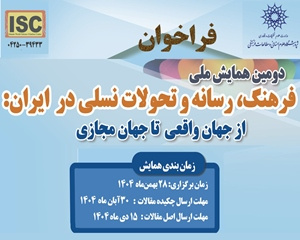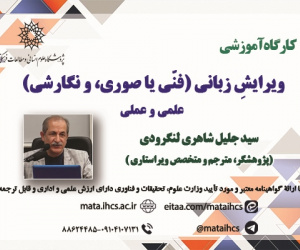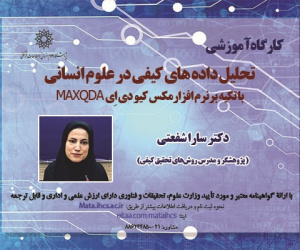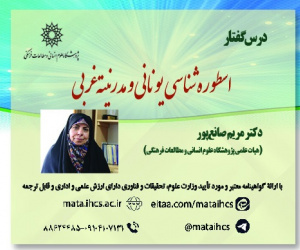ابعاد تمدن ایرانی- اسلامی در خط مشی های توسعه گردشگری پس از انقلاب اسلامی ایران (مقاله علمی وزارت علوم)
درجه علمی: نشریه علمی (وزارت علوم)
آرشیو
چکیده
توسعه گردشگری در هر کشوری متأثر از ایدئولوژی ها و سیاست های حاکمیت است. بنابراین، با تأثیرگذاری دیدگاه های سیاسی بر گردشگری می توان آن را فراتر از یک حرکت و جابجایی دانست که می تواند سبب گسترش الگوهای فکری و فرهنگی شود. هدف؛ نظر به تفاوت در ارزش ها و ایدئولوژی های قبل و بعد از انقلاب و تأثیرپذیری گسترده گردشگری از آرمان ها و سیاست های حاکمیت، هدف این مطالعه، تحلیل ابعاد تمدنی ایرانی- اسلامی در خط مشی های توسعه گردشگری با محوریت سه بدیل از تمدن نوین اسلامی یعنی اسلام، فرهنگ و سیاست در گردشگری است. روش شناسی؛ بدین منظور، به روش تحلیل محتوا 22 سند بالادستی انقلاب اسلامی ایران شامل قوانین و سیاست های اصلی برای توسعه گردشگری کشور بررسی شده اند. یافته ها؛ مؤلفه های به دست آمده شامل کیفیت زندگی، عدالت، اصالت ایرانی- اسلامی، همبستگی، توسعه بازار، دیپلماسی فرهنگی، توسعه علمی و هویت انقلابی هستند. نتایج نشان می دهد در خط مشی های گردشگری به توزیع عادلانه فرصت ها و منافع گردشگری، تقویت انسجام اجتماعی و هویت ملی از طریق گردشگری، معرفی فرهنگ و ارزش های ایرانی- اسلامی به جهانیان از طریق گردشگری، توجه شده است. همچنین، نتایج ناظر بر اهمیت نگرش علمی از طریق آموزش و پژوهش به گردشگری برای حفظ میراث فرهنگی و هویتی کشور است. بدین ترتیب، مؤلفه های استخراج شده حاکی از ظرفیت گردشگری در تحقق غایت تمدن نوین اسلامی است.Dimensions of Iranian-Islamic Civilization in the Tourism Development Policies of Post-Islamic Revolution Iran
Purpose: The development of tourism in any country is dependent on the priorities, goals, and policies of governments; to the extent that some experts consider the development or lack of development of this industry to be a reflection of government policies. The importance of this issue is such that some consider the government, especially in developing countries, to be the most powerful stakeholder in tourism development due to its management of a large portion of cultural and tourism heritage assets. Therefore, with the influence of political views on tourism, it can be considered more than just a movement and displacement that leads to the spread of thought patterns and cultures. This issue is of great importance for Iran because evidence indicates the cultural perspective of the country's policymakers and planners towards tourism in the overarching laws. Given the points mentioned, this research seeks to answer the question of what aspects have been considered in tourism development policies to promote and disseminate Iranian-Islamic culture and identity.Methodology: In this research, 22 high-level documents were examined, encompassing four groups of primary laws and policies for the country's tourism development. These included the Vision Document for the Development of Iran's Cultural Heritage and Tourism Sector, the Strategic Development Plan for the Country's Tourism, the Five-Year Economic, Social, and Cultural Development Plans of the Islamic Republic of Iran, and the General Budget Laws of the country. The collected data was analyzed using a conventional content analysis method. This method is the most common approach used by researchers in studies aimed at describing a phenomenon.In this approach, pre-determined categories are avoided to allow for new insights by exploring implicit meanings. To achieve this goal, a three-stage framework was used to carry out the content analysis process. In the first stage, known as the preparation stage, the data extracted from the document texts was reviewed multiple times. In the second stage, based on the study's objective, open coding and primary categorization were performed using an inductive approach and organized. In the third stage, the codes and categories were finalized to ensure clear, logical, and systematic conclusions.Findings: The 141 codes obtained from the analysis of documents related to tourism development were categorized into 19 categories (Figure 1) and 8 themes (Figure 2). 'Language, culture, and local identity,' 'territorial/geographic equity and balance,' 'lifestyle,' and 'social justice' were the categories with the highest frequency, indicating that the main focus in tourism development policies has been on the expansion and promotion of local culture and identity. In contrast, 'gender equity,' 'values of the Islamic Revolution,' and 'values of Iranian-Islamic culture' had the lowest frequency, suggesting that while less attention has been paid to value symbolization in tourism development, it has not been completely neglected.Conclusion: Although the related documents provide a relatively comprehensive model for the dissemination of Iranian-Islamic culture and identity through tourism, the requirements for monitoring and evaluating them are essential. Therefore, developing a monitoring and evaluation system to measure the effectiveness of tourism policies in the identified dimensions is necessary. Additionally, given the country's conditions, various intervening factors affect the realization or non-realization of the identified policies, so identifying these intervening factors is important. Considering the diversity of policies, strengthening inter-sectoral cooperation in the direction of tourism policies, and cooperation and coordination among stakeholders in disseminating Iranian-Islamic culture and identity through tourism is essential. Creating interaction and cooperation between religious, cultural, and scientific centers with tourism-related organizations, and holding joint educational, research, and cultural programs to preserve the authenticity and values of Iranian-Islamic culture require efforts from managers and policymakers in these areas. Establishing appropriate mechanisms to facilitate this, such as forming strategic committees and specialized working groups, can be beneficial. In the dimension of advertising, which is one of the most important existing policies, managers should pay attention to developing appropriate indicators for evaluating Iran's advertising programs in terms of their compliance with Iranian-Islamic values. Also, considering the role of education in tourism development, educating and empowering the staff of tourism centers in the field of Iranian-Islamic values and methods of promoting them through tourism is important.








